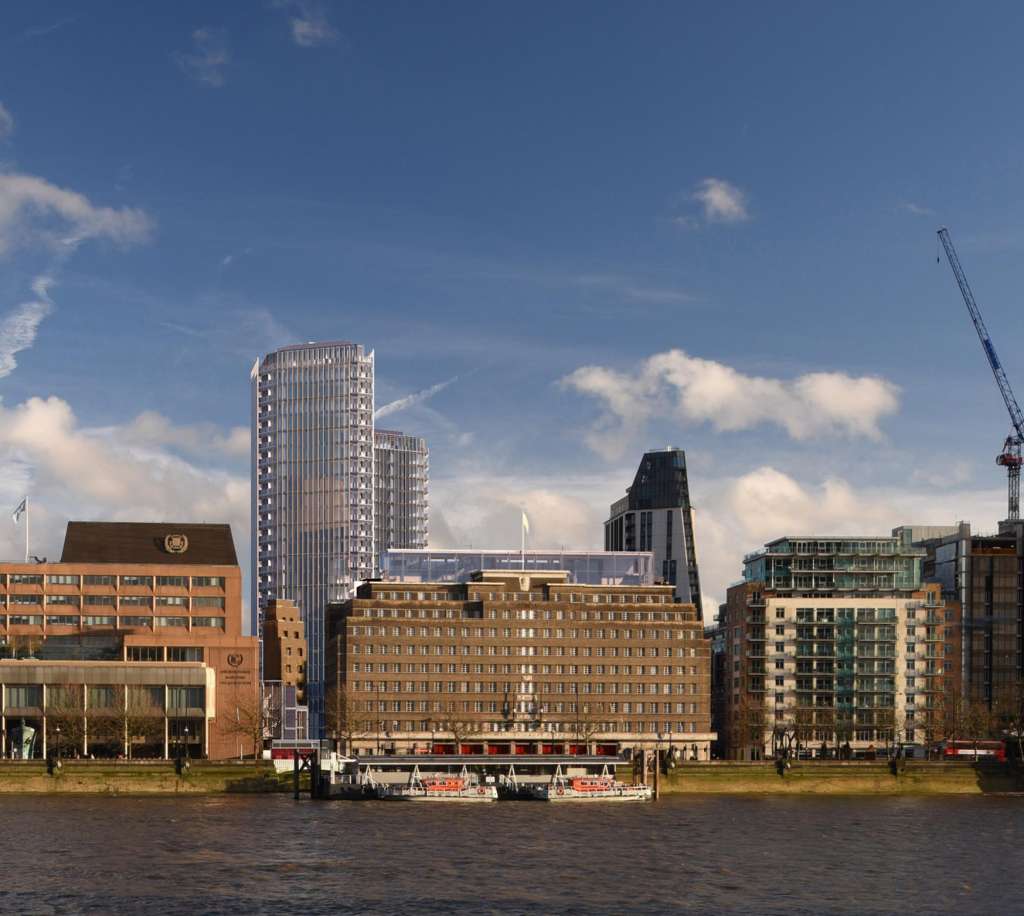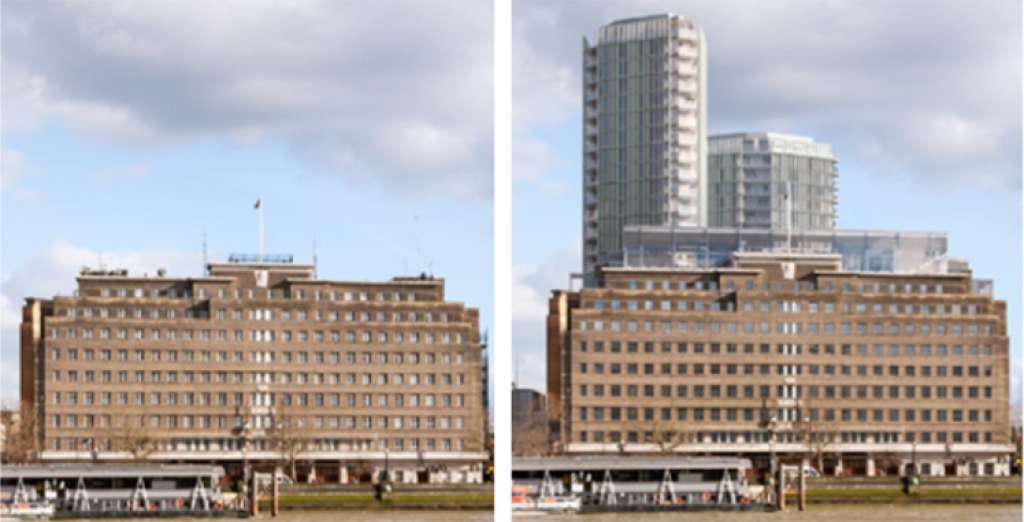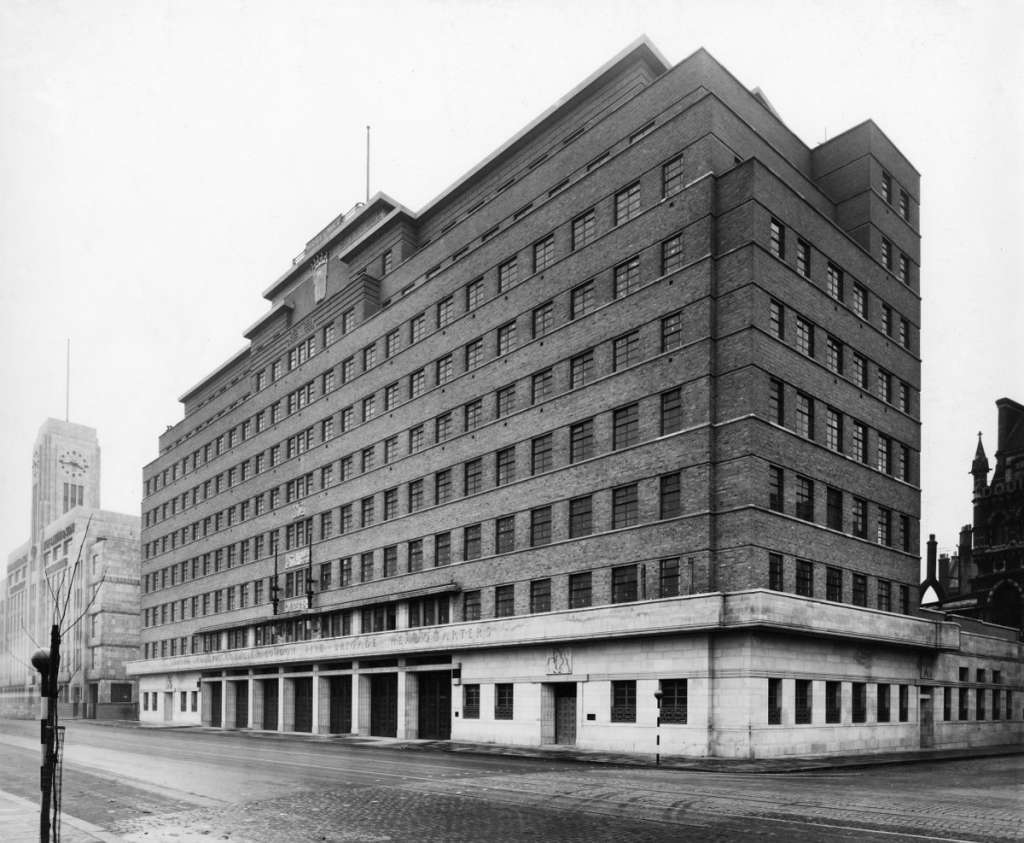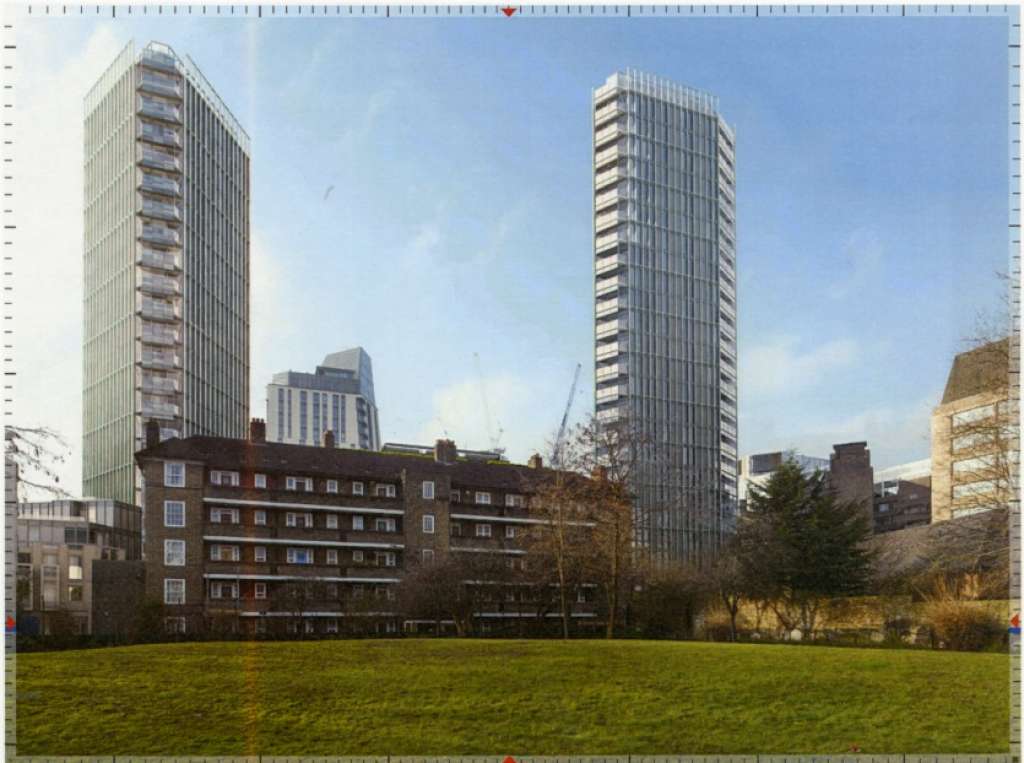PRESS RELEASE: Public Inquiry opens into London Fire Brigade HQ proposals
4th December 2020
Towers of 20 + storeys proposed behind 1930s historic landmark
A public inquiry has opened this week into a highly controversial proposal for two towers of 24 and 26 storeys behind the historic London Fire Brigade HQ on the south bank of the Thames, in the heart of the Albert Embankment Conservation Area.
The plans, submitted by developer U&I and architects Pilbrow & Partners and approved by Lambeth Council in December 2019, have raised concerns about the impact on the setting and significance of heritage assets across the wider locality.
These include the grade I listed Lambeth Palace and conservation area, the Westminster UNESCO World Heritage Site just 650m away across the Thames, Old Paradise Gardens, the grade II listed St Mary’s of Lambeth (now the Garden Museum) and the Albert Embankment Conservation Area itself.
Proposed alterations to the fabric of the listed LFB building and demolition of the unlisted Workshop on Lambeth High Street have also drawn criticism, with the Twentieth Century Society objecting strongly to a two storey glass roof top extension proposed for the grade II listed landmark.
The application has given rise to substantial local and national opposition, with over 5000 people signing a petition objecting to the scheme in January 2020.
SAVE Britain’s Heritage has strongly objected to the proposals, and joined the Garden Museum, Lambeth Village (representing a variety of local community groups), Westminster City Council and the Beaconsfield Gallery in requesting the Secretary of State ‘call in’ the plans for assessment at a public inquiry on the basis of heritage harm and other issues including overshadowing and loss of light to existing residents in the area.
Marcus Binney, executive president of SAVE Britain’s Heritage says: “The south bank of the Thames between Lambeth Bridge and Chelsea Bridge has been overrun with high-rise buildings which do nothing to improve the panoramas of London from the river. Here, behind the historic Fire Station, is an oasis village treasured by locals and steadily being brought back to life. These two towers crash into their surroundings like an ungainly giant who cannot see where he is putting his feet”.
Christopher Woodward, director of the Garden Museum says: “If we can’t stop the march of speculative, shiny high-rise towers at the gates of Lambeth Palace what will London’s future be? And this is a battle for the basic human right to daylight. The developer is taking sunlight from the poor to sell it to the rich”.
Scheduled to last eight days, the inquiry will examine issues including the heritage impacts of the proposals, viability, housing provision and the extent to which the proposed development is consistent with local development policies.
The virtual public inquiry is being streamed live on the Planning Inspectorate YouTube page here: https://www.youtube.com/watch?v=jM8_Poi0eWo.
Core documents and further details on the plans and the inquiry can be found on Lambeth Council’s website here: https://www.lambeth.gov.uk/planning-and-building-control/planning-applications/public-inquiry-for-8-albert-embankment.
The outcome of the inquiry is not expected before the spring of 2021.
History
The London Fire Bridge (LFB) Headquarters opened in July 1937 in advance of World War II to replace an old fire station. Commissioned by the London County Council the building was designed by EP Wheeler, architect to the LCC, with sculpture work by Gilbert Bayes, Stanley Nicholas Babb and FP Morton.
The building was designed and constructed to accommodate seven fire engines, accommodation for officers and staff and a ten-storey high training tower. The building was elaborately designed with sculptures and a memorial hall for public events.
Across Lambeth High Street is a large unlisted vehicle workshop, which was home to the research and development section of LFB and forms part of the overall historic complex. The workshop accommodated garages and repair shops, stores and a training school. Over the years many unique vehicles and pieces of equipment were developed here which greatly influenced the work of the LFB.
ENDS
Note to editors
1. For more information and images contact Ben Oakley, Conservation Officer at SAVE Britain's Heritage: ben.oakley@savebritainsheritage.org/ 07388 181 181.
2. SAVE Britain’s Heritage has been campaigning for historic buildings since its formation in 1975 by a group of architectural historians, writers, journalists and planners. It is a strong, independent voice in conservation, free to respond rapidly to emergencies and to speak out loud for the historic built environment.




